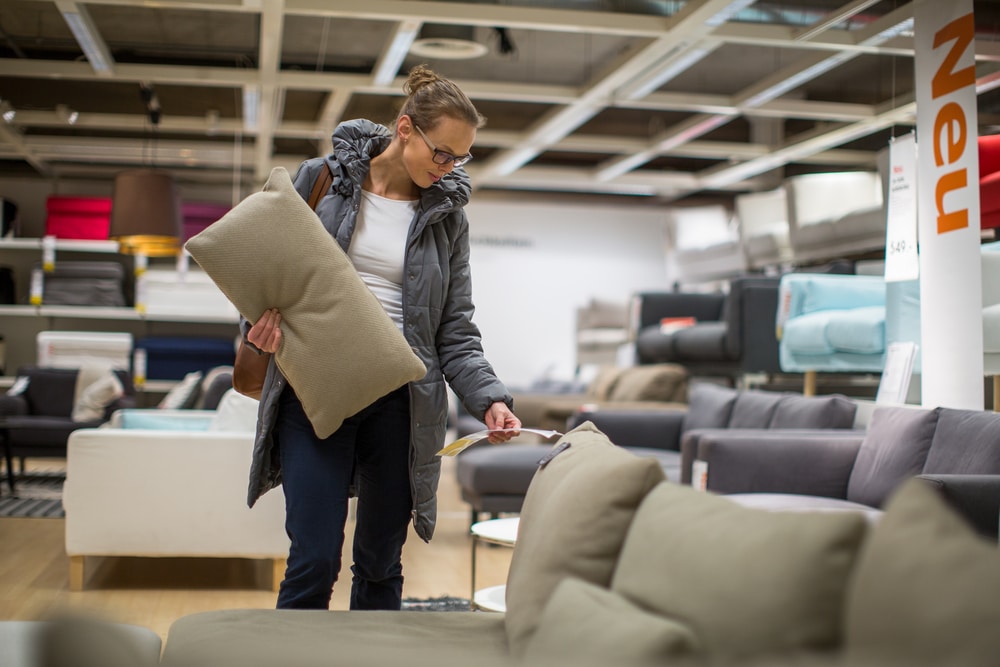What to Consider When Buying Furniture for College Students
Selecting suitable furniture for college students is crucial to creating an environment conducive to learning, productivity, and personal well-being. As college students embark on their academic journey, they must have comfortable and functional furniture to support their various activities, such as studying, resting, and socializing.
Choosing the right furniture cannot be overstated, as it directly impacts a student’s ability to concentrate and maintain a healthy physical and mental lifestyle. Several factors must be considered when choosing furniture, including budget constraints, space limitations, durability, quality, and personal preferences.
Each factor significantly determines the most suitable furniture choices that cater to a student’s unique needs and circumstances. By carefully considering these factors, students and their families can make informed decisions to contribute to a more enjoyable, efficient, and comfortable college experience.
Types of furniture needed for college students
1. Bed
When choosing a bed for a college student, it is important to consider the available space and functionality. Twin or full-size beds are the most common options, as they provide enough sleeping areas without taking up too much space. Loft beds are an excellent choice for smaller rooms, as they maximize floor space by elevating the sleeping area, allowing for storage or study space underneath.
If you are considering other furniture for college students, Futons or sofa beds offer a versatile solution. They can be used as daytime seating and converted into a sleeping surface at night. Each bed option caters to different needs and preferences, so it’s important to carefully assess the student’s requirements and living situation before deciding.
2. Study area
A well-organized and comfortable study area is essential for college students to maintain focus and productivity. This area typically comprises a desk, chair, desk lamp, and shelves or bookcases. The desk should be large enough to accommodate a laptop or desktop computer, textbooks, and writing materials. At the same time, the chair should provide ergonomic support to ensure proper posture and reduce fatigue during long study sessions.
A desk lamp is vital for adequate lighting, especially during late-night study sessions, as it helps reduce eye strain and maintain focus. Shelves or bookcases offer organized storage for textbooks, reference materials, and supplies, making locating items quickly and maintaining a clutter-free environment easier for students. By thoughtfully selecting and arranging these elements, students can create an efficient and comfortable study area that promotes academic success.
3. Storage
Efficient storage solutions are crucial for college students, particularly when living in limited spaces like dorm rooms or small apartments. A dresser provides ample space for clothing and personal items while also contributing to the room’s overall aesthetics. Closet organizers, such as hanging shelves or storage bins, can maximize the use of limited closet space and keep clothing and accessories neatly arranged.
Under-bed storage, including drawers or storage containers, is an excellent way to utilize unused space beneath the bed for additional storage. By incorporating these storage solutions, college students can maintain a tidy living environment, making locating belongings easier and reducing distractions caused by clutter.
4. Seating
Comfortable and versatile seating options are essential for college students to unwind, socialize, or engage in leisure activities. Beanbag chairs provide a relaxed and casual seating alternative that can be easily moved around or stored when not in use. Lounge chairs offer a more structured yet comfortable option, perfect for reading or watching TV while adding a style touch to the room.
Folding chairs are a practical choice for accommodating extra guests during study sessions or gatherings, as they can be quickly set up and stored away when not needed. By incorporating a variety of seating options, students can create a welcoming and adaptable living space that caters to their needs and promotes relaxation during downtime.
5. Additional items
In addition to essential furniture for college students, college students can benefit from incorporating a few additional items that enhance the functionality and aesthetics of their living space. A side table, for example, can be placed next to the bed or seating area, providing a convenient surface for a lamp, books, or beverages. Rugs can add a touch of warmth and style to the room while providing extra insulation and noise reduction.
Room dividers are a practical option for students sharing living spaces, as they offer privacy and help create designated zones for different activities. By thoughtfully incorporating these additional items, college students can further personalize their living environment, making it more comfortable and visually appealing.
Key factors to consider when purchasing furniture for college students
1. Budget
Budget plays a large role in determining the furniture for college students, as many are working with limited funds. Exploring cost-effective options that provide the necessary functionality without breaking the bank is essential. Purchasing furniture at discount stores, second-hand shops, or online retailers can yield affordable yet quality furniture.
Additionally, college students can consider DIY solutions to personalize and enhance their living space. This might include repurposing or upcycling old furniture, creating makeshift storage solutions, or adding decorative touches with inexpensive materials. Students can create a comfortable and functional living environment without straining their finances by being resourceful and prioritizing budget-friendly options.
2. Space constraints
Space constraints are a common challenge for college students, especially those living in dorm rooms or small apartments. In order to make the most of limited space, it is essential to consider multi-functional furniture and compact designs. Multi-functional furniture like a bed with built-in storage or a desk that converts into a dining table offers versatility and helps save space by serving multiple purposes.
Compact designs, like foldable or wall-mounted furniture, can be easily stored away when not in use, creating more room for other activities. By thoughtfully selecting furniture that maximizes available space, college students can create a more organized and comfortable living environment, despite the limitations of their surroundings.
3. Durability and quality
Durability and quality are essential when choosing furniture for college students. Investing in well-constructed pieces can save money in the long run by reducing the need for frequent replacements. Material selection plays a significant role in determining the longevity and resilience of furniture. For example, solid wood, metal, or high-quality plastic materials are more likely to withstand daily wear and tear than particleboard or low-quality materials.
Furthermore, the construction of the furniture should be thoroughly examined, with attention given to details like sturdy joints, secure fastenings, and even weight distribution. By prioritizing durability and quality when selecting furniture, college students can enjoy a more reliable and long-lasting living environment that supports their academic and personal needs.
4. Style and personal preference
Style and personal preference are crucial in creating a comfortable and inviting living space for college students. Students can create an environment that reflects their personality and promotes a sense of belonging by selecting furniture that matches the room’s theme or décor and incorporates individual tastes.
This might include choosing furniture with specific colors, patterns, or design elements that align with the student’s preferences or opting for decorative accents that showcase their interests and hobbies. Creating a space that truly represents the student not only enhances the room’s overall aesthetics but also contributes to their emotional well-being, making it easier to adapt to college life and enjoy their living environment.
Tips for finding affordable and quality furniture
1. Shopping online
Shopping online for furniture offers college students a convenient and potentially cost-effective way to find suitable pieces for their living space. Discount websites and online retailers often provide a wide selection of styles and designs at competitive prices, allowing students to compare options and find the best deals.
Additionally, some websites offer exclusive discounts or promotional codes, reducing the overall cost. Furniture rental services are another online option that enables students to rent furniture for a specified period, making it a practical solution for temporary accommodations or those unsure of their long-term plans. College students can conveniently find and acquire the necessary furniture to create a comfortable and functional living environment by exploring online shopping options.
2. Shopping in-person
Shopping in-person for quality furniture allows college students to find unique and budget-friendly options while physically examining the quality and construction of the items. Thrift stores offer a variety of pre-owned furniture pieces at affordable prices, often including one-of-a-kind items that add character and charm to a living space.
Garage sales can also be a treasure trove of furniture for college students for budget-conscious students, as they may come across gently used furniture or accessories at significantly reduced prices. Outlet stores provide another option: they often sell overstocked or discontinued items at discounted prices without compromising quality. By exploring these in-person shopping options, college students can find affordable, distinctive furniture pieces that cater to their needs and preferences.
3. Refurbishing or repurposing old furniture
Refurbishing or repurposing old furniture is an eco-friendly and cost-effective approach for college students to create personalized and unique living spaces. Engaging in DIY projects allows students to breathe new life into worn-out or outdated furniture by repainting, reupholstering, or modifying the pieces to suit their needs and style preferences.
Upcycling ideas like transforming an old ladder into a bookshelf or converting a wooden crate into a side table can add a creative touch to the living space and provide functional solutions. By repurposing and refurbishing old furniture, college students can showcase their creativity, save money, and contribute to a more sustainable lifestyle.
As you prepare to buy furniture for your college dorm, you should also prepare for your college admission. If you wish for guidance in your journey, AdmissionSight will help you through the competitive admissions process. With AdmissionSight’s team of top experts, you can surely get accepted to the top universities in the world. Set up an appointment today and get the best help getting into college.








































